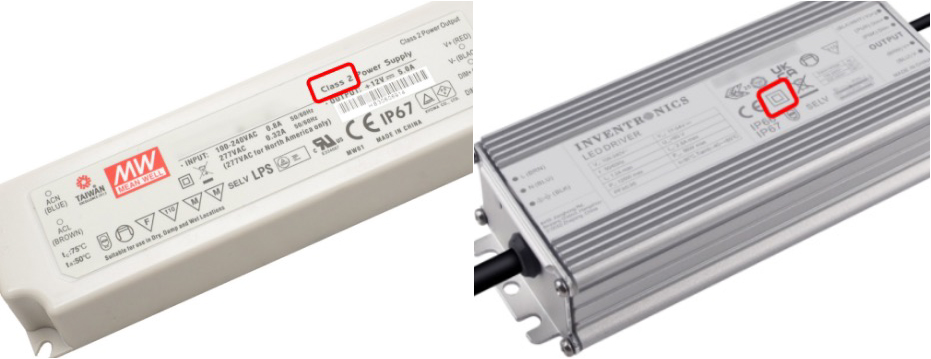Blog
The Differences Between a Class 1 & Class 2 Driver and a Class I & Class II LED Driver. What does it mean and what is the difference?
When dealing with drivers, it’s important to remember that not all drivers are created equal. There are several classifications of drivers that power lighting systems, and understanding the differences between the two classes of LED drivers is key.
There are two separate ways to classify LED drivers (LED power supplies—Class 1 and 2 or Class I and II). A classification using Roman numerals has a different meaning than one written in Arabic numbers which can often make the distinctions between these two classes seem confusing.
The differences: Class 1 and Class 2 LED Drivers:
Class 1 and Class 2 safety classifications were published by the National Electrical Code (NEC) and stand for the output voltage and power capabilities of AC-DC supplies. They are classified according to the UL standards for safety and performance.

UL Class 1: An LED driver that has a high-voltage output, so safety protection is required within the fixture. This type of driver is best suited for medium-to-large scale projects where energy efficiency and cost savings are desired results. They also can be used for industrial applications where constant illumination is required over long periods of time. The wiring methods for this class must comply with NEC requirements for power circuits.
UL Class 2: UL Class 2 LED drivers comply with Standard UL1310, meaning the output is considered safe to contact, and no major safety protection is required at the LED/luminaire level. There is no risk of fire or electric shock from these drivers.

Class I and II LED Drivers: Class I and Class II safety classifications comply with The International Electrotechnical Commission (IEC) and specifically refer to the internal construction and electrical insulation of the power supply that provides safety against electric shock.
IEC Class I: Input LED drivers have basic insulation and should have protective earth (ground) at the input side connection to eliminate the risk of electric shock.
IEC Class II: Input models feature additional safety precautions such as double insulation or reinforced insulation, therefore, there is no need for a protective earth (ground) connection.


